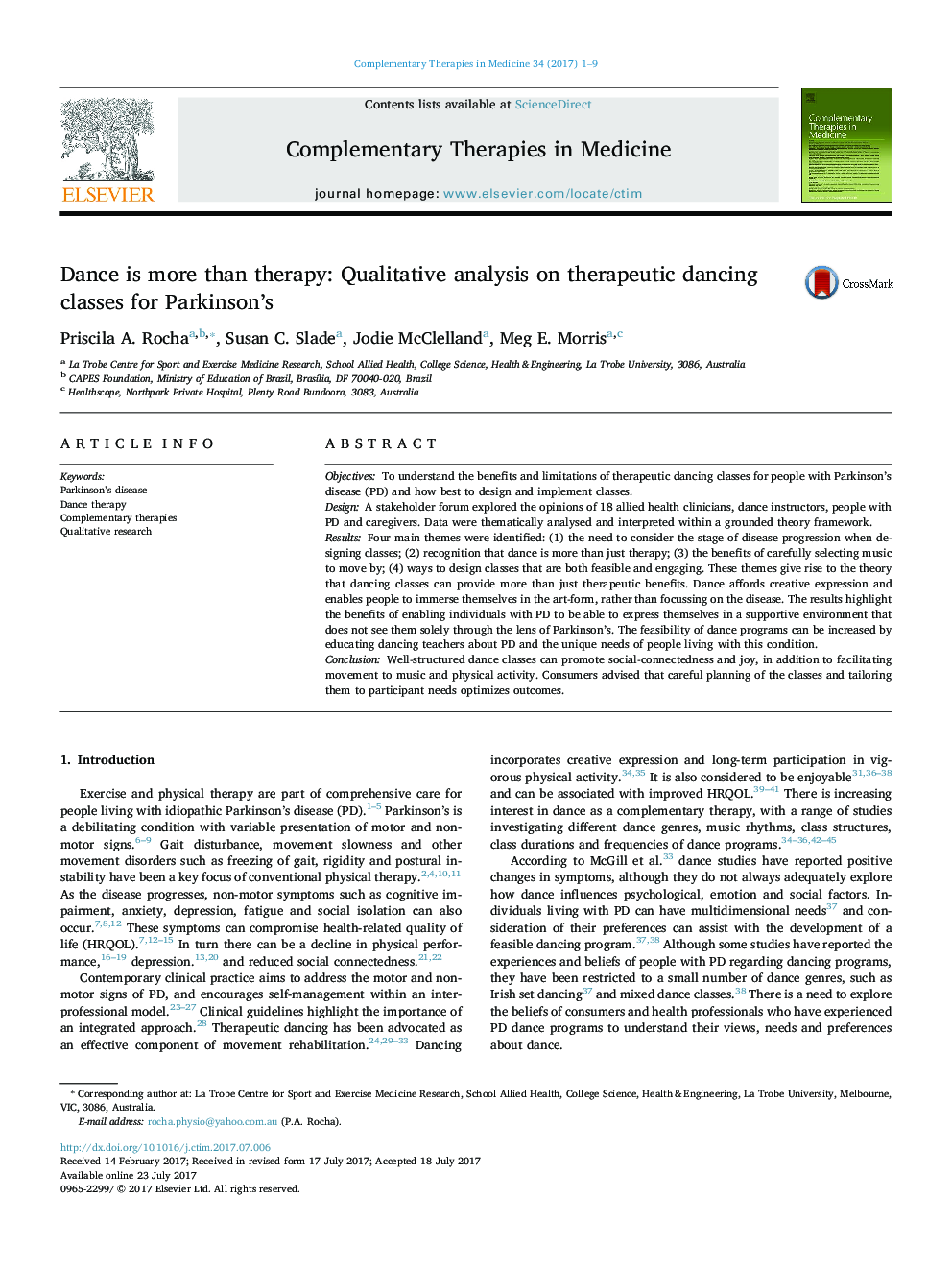| کد مقاله | کد نشریه | سال انتشار | مقاله انگلیسی | نسخه تمام متن |
|---|---|---|---|---|
| 5565182 | 1563200 | 2017 | 9 صفحه PDF | دانلود رایگان |
- Dance is perceived as an effective intervention for improving motor symptoms and quality of life, whilst providing the artistic experience of dance.
- Some components of music can trigger motor and emotional responses, facilitating movement and enhancing emotional and social aspects.
- Increasing the knowledge of dance instructors about the disease can increase the feasibility of dance programs for individuals living with PD.
- Dance classes tailored according to the multi-dimensional needs of people with PD can enhance adherence and compliance to programs.
ObjectivesTo understand the benefits and limitations of therapeutic dancing classes for people with Parkinson's disease (PD) and how best to design and implement classes.DesignA stakeholder forum explored the opinions of 18 allied health clinicians, dance instructors, people with PD and caregivers. Data were thematically analysed and interpreted within a grounded theory framework.ResultsFour main themes were identified: (1) the need to consider the stage of disease progression when designing classes; (2) recognition that dance is more than just therapy; (3) the benefits of carefully selecting music to move by; (4) ways to design classes that are both feasible and engaging. These themes give rise to the theory that dancing classes can provide more than just therapeutic benefits. Dance affords creative expression and enables people to immerse themselves in the art-form, rather than focussing on the disease. The results highlight the benefits of enabling individuals with PD to be able to express themselves in a supportive environment that does not see them solely through the lens of Parkinson's. The feasibility of dance programs can be increased by educating dancing teachers about PD and the unique needs of people living with this condition.ConclusionWell-structured dance classes can promote social-connectedness and joy, in addition to facilitating movement to music and physical activity. Consumers advised that careful planning of the classes and tailoring them to participant needs optimizes outcomes.
Journal: Complementary Therapies in Medicine - Volume 34, October 2017, Pages 1-9
